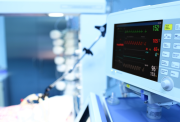Medical device manufacturers (and the businesses involved in their supply chains) now only have until 26th May 2020 to comply in full to the EU Medical Device Regulation (MDR).
The EU MDR’s main objective is to improve patient safety with stricter rules for the assessment of medical devices. These new regulations will improve the quality, safety, and reliability of medical devices, while also strengthening the transparency of information for consumers.
In addition, the new regulations aim to provide a standard review process for Notified Bodies and the industry. However, a recent report stated that only nine Notified Bodies have received accreditation under the MDR to assess the conformity of medical devices. Despite this, it is CCL Design’s view that gaining full compliance for the 26th May 2020 deadline is still critically important.
So, the clock is well and truly ticking, but what makes matters worse is that despite awareness to the new regulations being relatively high, there has been a lot of uncertainty and medical device companies have reported that they have a lack understanding of the EU MDR.
What has changed?
Reclassification of medical devices
One of the most significant changes is the introduction of a transitional period for certain low-risk medical devices, such as certain software and reusable surgical instruments, that are currently classified as Class I, will be moved into a higher-risk class under the EU MDR. The regulations also encompass products without an intended medical purpose such as contact lenses, dermal or other fillers, and equipment for liposuction to name but a few. Also, importantly, all the actors in the supply chain will now have potential responsibility for defects in devices – previously the regulations focused solely on manufacturers.
At CCL Design we’re advising our medical device clients that a good starting point is to review product portfolios to understand which products need to comply. Remember, devices are subject to re-classification, so all products need to be reviewed. Also, through this process you will be able to also identify if compliance will require re-labelling of existing devices.
The introduction of UDIs
The changes will also mean that each device will now need to have a unique device identifier (UDI) that must be placed on the label and/or package of medical devices. The UDI produced for a device comprises a UDI-DI (device identifier – specific to a manufacturer and device) and a UDI-PI (production identifier – identifies unit of device production).
This UDI will then be logged on the European database for medical devices (EUDAMED), and the records will be updated to give a living picture of devices as they move through the supply chain, which will help detect and reduce counterfeiting.
The UDI information assigned to medical devices will also need to be tracked by manufacturers, authorised representatives, importers, and distributors. Therefore, it is very likely that all these parties will need modify their quality management system to ensure information is not lost but stored in a proper, systematic way.
Three steps to compliant labelling and traceability
From our experience of developing traceability products and systems for over 35 years for both small businesses and large global corporations, at CCL Design we have found that, in general, companies require either printed products direct for their application, or digital printing systems so they can print on demand. There are three areas that medical device manufacturers should closely consider when starting out on the product labelling process:
1. Materials that last the test of time – determining the right base material to provide the carrier of information requires durable flexible substrates that retain the information under stringent environmental testing. It is also necessary to combine the substrate with specialised adhesives to ensure the information is adhered to the product for its lifetime which may include washing cycles, high temperatures, and humidity. This must take into account the composition of the material it is being applied to, the surface texture, and surface energy.
2. Quality and readability – the second consideration is how the information is printed. This needs to be compatible with the label substrate to ensure it provides a high-quality print that is durable and readable both electronically and by eye.
3. A need for clarity – connected to point two, what may also go unnoticed with these new EU regulations are the importance of clarity of language – especially on content for the end user such as labelling. Here, the regulations state that the labelling must be ‘clearly comprehensible to the intended user’. Also, the Instructions for Use (IFUs) need to be part of the device’s technical dossier and will now need to be submitted for review by Notified Bodies along with the package labelling.
Implementing a traceability system including data capture can be straight forward with proven off the shelf labels, hardware, and software. But, ensuring that the system lasts the test of time and is individually customised to the particular product and environment is crucial.
Author: Matt Surgeon, UK Sales Director at CCL Design UK.
E: CCLDesignelectronics@cclind.com